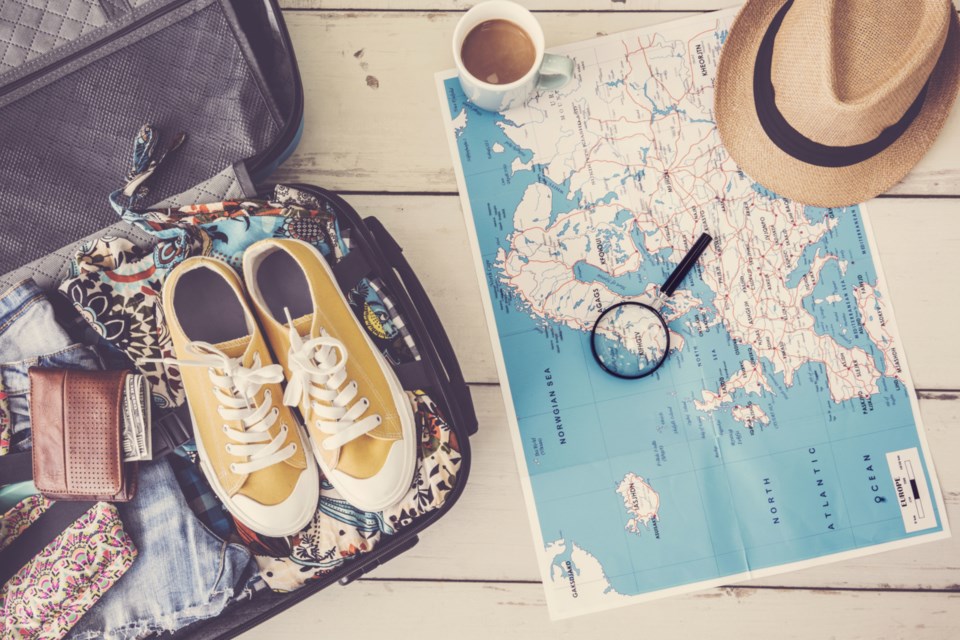This article, written by Valorie A. Crooks, Simon Fraser University and Jeremy Snyder, Simon Fraser University, originally appeared on The Conversation and has been republished here with permission:
What do some birds, butterflies and whales have in common with tens of thousands of older Canadians? They all participate in an annual migration by heading south for the winter.
While we don’t have systems in place to know exactly how many Canadian snowbirds there are, a recent report from Statistics Canada suggests that at least 375,000 typically go to the United States and Mexico each year, not counting other popular destinations. The word “typically” here is important, though, because there is nothing typical about travelling south during the COVID-19 pandemic.
In a typical year, we’d expect snowbirds to be organizing potlucks and participating in pickleball tournaments. As of last spring — when COVID-19 started to spread in popular destinations and pandemic measures were rolled out — we saw this annual migration being framed in a very different way.
Concern emerged that snowbirds who had not returned home prior to border closures would no longer be covered by travel health insurance policies. We learned of stressful journeys back to Canada and rising tensions as snowbirds stocked up on supplies after arriving home with orders to self-isolate.
Suddenly snowbirds were not just our parents, grandparents, community members and friends. They were people engaging in a risky practice.
Warm climates, cold shoulders
Recent weeks have seen ample public attention being given to snowbirds once again. Some older Canadians have decided to go south despite the ongoing pandemic and while various travel restrictions remain in place. Snowbirds are getting vaccinated in Florida, leaving some concerned about equity as Canadians receive vaccines before Floridians.
Canadian snowbirds have voiced concern about the new requirement for COVID-19 testing upon return to Canada and complained the associated costs were unfair. And perhaps most concerning, stories of some snowbirds facing serious medical bills following COVID-19 treatment while abroad are now emerging.
Many people are surely left wondering why any Canadians would actually go south this winter. For the past several years, we have been researching health-care access and health management among Canadian snowbirds who winter in Florida and Arizona.
Careful decision-making
We have spent time in snowbird communities speaking with Canadians, touring hospitals and clinics and talking to health-care providers, and observing community gatherings. We have some insights to offer that help explain why some snowbirds have opted to go abroad this winter — but, to be clear, by sharing them we are not endorsing such travel.
First, there are many factors that prompt people to consider becoming retirement migrants. The warm, sunny weather in popular destinations likely comes to mind first. Many people are also drawn to the social networks found in snowbird communities.
Something that people may be less aware of is that for some snowbirds, relocating for the winter is more economical than staying home. Not all snowbirds live in mansions or have yachts. For some, going south in an RV or renting a seasonal apartment is a cost-saving strategy. This budgetary or financial draw is unlikely to be changed for some, despite the pandemic and strong requests for Canadians to avoid travel.
Second, many snowbirds view going south for the winter as a strategy for promoting health. Recreational opportunities, even if done in isolation to respect current public health orders (e.g., going for a walk), are plentiful. Many snowbirds also report improved health while away, such as reduced arthritis symptoms. Some older Canadians have opted to go south this winter because they see the health benefits of doing so as outweighing the health risks of developing COVID-19 while away from home.
Third, navigating risks as they relate to health is nothing new for snowbirds. While the pandemic has introduced new risks and heightened others, snowbirds make decisions annually about travelling that involve health factors.
This includes making decisions about purchasing travel health insurance, whether to access care while abroad or return home in the event of a medical emergency, and how and where to get prescription refills. Some go as far as to purchase air ambulance policies so that they can return home if their health worsens, while others opt to make no specific health preparations at all.
Some snowbirds likely view COVID-19 and the pandemic as contingencies that can be planned for.
One thing we know for sure is that some Canadian snowbirds have opted to go south for the winter. Moving forward, we need to consider what this means for their return home. This includes planning for how to get those who were vaccinated abroad into national registries and creating advice tailored to snowbirds regarding quarantine upon return home. It is not too early to start this planning — soon enough their return migration will begin.![]()
Valorie A. Crooks, Full Professor, Department of Geography, Simon Fraser University and Jeremy Snyder, Professor, Faculty of Health Sciences, Simon Fraser University
This article is republished from The Conversation under a Creative Commons license. Read the original article.



